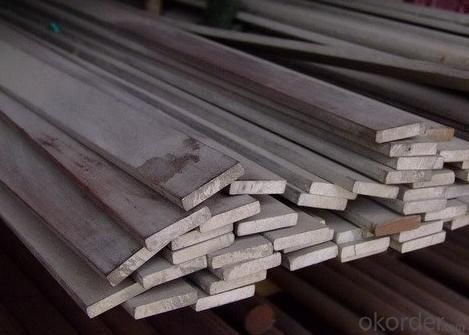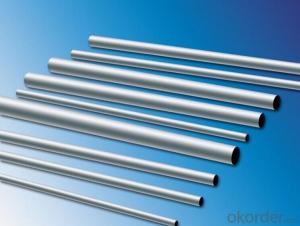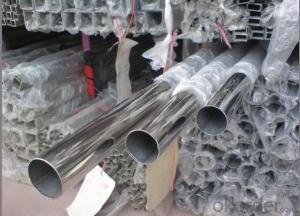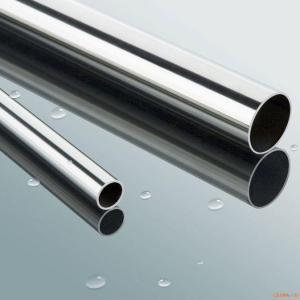304 Stainless Steel Flat
- Loading Port:
- China Main Port
- Payment Terms:
- TT or LC
- Min Order Qty:
- 5 Tons m.t.
- Supply Capability:
- 1000 Tons Per Month m.t./month
OKorder Service Pledge
OKorder Financial Service
You Might Also Like
Stainless Steel Flats
1. Standard: AISI, GB, JIS, ASTM, DIN, EN
2. Grade: 1).200Series: 201,202.
2).300Series: 301,302,303,304,304L,316,316L,321.
3).400Series: 410,410S,416,420,430,430F.
3. Size:3x25mm- 80x250mm
4. Length: 2m-6m
5. Craft: HRAP, or cold drawn
6. Stainless Steel Flat Bar Surface: Pickling or polished
7. MOQ: 1 Ton
8. Delivery: within 20 days
9. Package: Waterproof with tape
10. Application: These products are widely supplied to areas of machine-made industry, chemical industry, shipping industry,architecture, food industry, household products etc.
|
Size |
Thickness (mm) | |||||||||||
|
Width (mm) |
3 |
4 |
5 |
6 |
8 |
10 |
12 |
14 |
16 |
20 |
25 |
30 |
|
Theoretical Weight (kg/m) | ||||||||||||
|
10 |
0.238 |
0.32 |
0.4 |
0.48 |
0.63 |
|
|
|
|
|
|
|
|
15 |
0.36 |
0.48 |
0.59 |
0.71 |
0.95 |
1.19 |
|
|
|
|
|
|
|
20 |
0.476 |
0.63 |
0.79 |
0.95 |
1.27 |
1.59 |
1.9 |
|
|
|
|
|
|
25 |
0.585 |
0.79 |
0.99 |
1.19 |
1.59 |
1.98 |
2.38 |
|
|
|
|
|
|
30 |
0.714 |
0.95 |
1.19 |
1.43 |
1.9 |
2.38 |
2.85 |
3.33 |
3.81 |
4.75 |
5.948 |
|
|
40 |
0.952 |
1.27 |
1.59 |
1.9 |
2.54 |
3.17 |
3.81 |
4.44 |
5.08 |
6.34 |
7.93 |
9.52 |
|
50 |
1.19 |
1.59 |
1.98 |
2.38 |
3.17 |
3.97 |
4.76 |
5.55 |
6.34 |
7.93 |
9.91 |
11.9 |
|
60 |
1.428 |
1.9 |
2.38 |
2.85 |
3.81 |
4.76 |
5.71 |
6.66 |
7.61 |
9.52 |
11.9 |
14.27 |
|
70 |
|
2.22 |
2.78 |
3.33 |
4.44 |
5.55 |
6.66 |
7.77 |
8.88 |
11.1 |
13.88 |
16.65 |
|
80 |
|
|
3.17 |
3.81 |
5.08 |
6.34 |
7.61 |
8.88 |
10.15 |
12.69 |
15.86 |
19.03 |
|
90 |
|
|
3.57 |
4.28 |
5.71 |
7.14 |
8.56 |
9.99 |
11.42 |
14.27 |
17.84 |
21.41 |
|
100 |
|
|
3.97 |
4.76 |
6.34 |
7.93 |
9.52 |
11.1 |
12.69 |
15.86 |
19.82 |
23.79 |
|
110 |
|
|
|
5.23 |
6.98 |
8.72 |
10.47 |
12.21 |
13.96 |
17.45 |
21.81 |
26.17 |
|
120 |
|
|
|
5.71 |
7.61 |
9.52 |
11.42 |
13.32 |
15.23 |
19.03 |
23.79 |
28.55 |
|
130 |
|
|
|
6.19 |
8.25 |
10.31 |
12.37 |
14.43 |
16.49 |
20.62 |
25.77 |
30.93 |
|
140 |
|
|
|
6.66 |
8.88 |
11.1 |
13.32 |
15.54 |
17.76 |
22.2 |
27.76 |
33.31 |
|
150 |
|
|
|
7.14 |
9.52 |
11.9 |
14.27 |
16.65 |
19.03 |
23.79 |
29.74 |
35.69 |
|
160 |
|
|
|
7.61 |
|
12.69 |
15.23 |
17.76 |
20.3 |
25.38 |
31.72 |
38.06 |
|
170 |
|
|
|
|
|
13.48 |
16.18 |
18.87 |
21.57 |
26.96 |
33.7 |
40.44 |
|
180 |
|
|
|
|
|
14.27 |
17.13 |
19.98 |
22.84 |
28.55 |
35.69 |
42.82 |


- Q: Are stainless steel pipes suitable for gas distribution systems?
- Yes, stainless steel pipes are suitable for gas distribution systems. Stainless steel is a highly durable and corrosion-resistant material, making it ideal for carrying gases. It can withstand high pressures and temperatures, ensuring the safe and efficient distribution of gas. Additionally, stainless steel pipes have a long lifespan, reducing the need for frequent replacements and minimizing maintenance costs. Overall, stainless steel pipes provide a reliable and secure solution for gas distribution systems.
- Q: How do you prevent rusting in stainless steel pipes?
- To prevent rusting in stainless steel pipes, you can follow a few key steps. Firstly, ensure proper cleaning and maintenance of the pipes to remove any contaminants or corrosive substances. Additionally, avoid exposure to moisture by keeping the pipes dry and using appropriate sealing methods. Applying a protective coating or using corrosion-resistant materials can also help prevent rust formation. Lastly, regular inspections and prompt repairs of any damages or signs of corrosion can ensure the longevity of stainless steel pipes.
- Q: What is the difference between ferritic and austenitic stainless steel pipes?
- The primary distinction between ferritic and austenitic stainless steel pipes lies in their microstructure and composition, resulting in different properties and applications. Ferritic stainless steel pipes possess a ferrite microstructure, characterized by a body-centered cubic crystal structure. They boast high chromium levels (typically 10-30%) and low carbon content. This low carbon composition grants them excellent resistance against corrosion, though they are susceptible to sensitization and intergranular corrosion at elevated temperatures. Furthermore, they exhibit commendable durability, heat resistance, and magnetism, rendering them suitable for various uses such as automotive exhaust systems, architectural structures, and heat exchangers. In contrast, austenitic stainless steel pipes possess an austenite microstructure, characterized by a face-centered cubic crystal structure. These pipes contain high levels of chromium (usually 16-26%) and nickel (typically 6-22%), alongside low carbon content. Austenitic stainless steel pipes demonstrate superior resistance against corrosion, even in highly aggressive environments. They are non-magnetic, extremely ductile, and possess high toughness, making them ideal for industries such as chemical processing, food and beverage, pharmaceuticals, and medical equipment manufacturing. Additionally, they are less prone to sensitization and intergranular corrosion compared to their ferritic counterparts. To summarize, ferritic stainless steel pipes possess a ferrite microstructure, good corrosion resistance, and magnetism, while austenitic stainless steel pipes possess an austenite microstructure, superior corrosion resistance, non-magnetic properties, and enhanced mechanical properties. The choice between ferritic and austenitic stainless steel pipes hinges on the specific application, desired properties, and environmental conditions.
- Q: What are the common standards used for manufacturing stainless steel pipes?
- The common standards used for manufacturing stainless steel pipes include ASTM A312/A312M, ASTM A269, and ASTM A790.
- Q: What are the different sizes available for stainless steel pipes?
- Various industrial and residential applications can be catered to with a wide range of sizes of stainless steel pipes. The sizes of stainless steel pipes typically depend on their nominal pipe size (NPS) or outside diameter (OD). The diameter of stainless steel pipes commonly ranges from 1/8 inch to 48 inches. For smaller applications or plumbing systems, stainless steel pipes with NPS 1/8, 1/4, 3/8, and 1/2 are commonly utilized. These sizes are suitable for household plumbing, water supply lines, and low-pressure applications. As the requirements increase, larger stainless steel pipe sizes are available. Sizes such as NPS 3/4, 1, 1 1/4, 1 1/2, and 2 inches are commonly employed in various industries and commercial applications. These sizes are appropriate for higher-pressure applications like hydraulic systems, oil and gas pipelines, and chemical processing plants. For industrial applications that demand even larger pipes, stainless steel pipes with sizes ranging from 2 1/2 inches to 48 inches in diameter are accessible. These large pipes are frequently used in heavy-duty applications such as petrochemical plants, power generation facilities, and large-scale construction projects. It's important to note that stainless steel pipes are also obtainable in different wall thicknesses, known as schedules. The schedule number determines the wall thickness, with higher numbers indicating thicker walls. The most common schedules for stainless steel pipes are Schedule 5, Schedule 10, Schedule 40, and Schedule 80. In conclusion, a wide range of sizes are available for stainless steel pipes, starting from 1/8 inch and going up to 48 inches in diameter. The appropriate size selection depends on the specific application and the required pressure and flow requirements.
- Q: Can stainless steel pipes be used for natural gas?
- Yes, stainless steel pipes can be used for natural gas. Stainless steel is highly resistant to corrosion and can withstand the high pressures and temperatures associated with natural gas transmission and distribution. Additionally, stainless steel pipes have excellent fire resistance properties, making them a safe choice for natural gas applications.
- Q: Are stainless steel pipes suitable for hydraulic applications?
- Yes, stainless steel pipes are suitable for hydraulic applications. They offer excellent corrosion resistance and durability, making them ideal for use in hydraulic systems where fluid flow and pressure are involved. Additionally, stainless steel pipes can handle high temperatures and are resistant to cracking, making them a reliable choice for hydraulic applications.
- Q: Are stainless steel pipes suitable for construction projects?
- Yes, stainless steel pipes are highly suitable for construction projects. They offer exceptional strength, durability, and corrosion resistance, making them an ideal choice for various applications in construction, including plumbing, HVAC systems, structural supports, and more. Stainless steel pipes also have excellent aesthetic appeal and can withstand harsh environmental conditions, making them a reliable and long-lasting option for construction projects.
- Q: Can stainless steel pipes be painted or coated?
- Indeed, it is possible to paint or coat stainless steel pipes. However, it is vital to opt for a suitable paint or coating specifically formulated for stainless steel surfaces. This is because stainless steel possesses a smooth and non-porous surface, which can pose a challenge for proper adherence of paint or coatings. Moreover, stainless steel pipes may encounter harsh environmental conditions, such as elevated temperatures or corrosive substances, thus necessitating the use of a paint or coating that is resistant to these elements. By selecting the appropriate paint or coating and employing correct surface preparation techniques, one can effectively enhance the appearance of stainless steel pipes or provide them with added protection against corrosion.
- Q: What is the difference between seamless and cold-drawn stainless steel pipes?
- Seamless and cold-drawn stainless steel pipes differ in terms of their manufacturing methods and characteristics. Seamless stainless steel pipes are produced without any welding or seams. The process involves piercing a solid cylindrical billet or ingot of stainless steel and rolling it into a hollow tube shape. This seamless manufacturing technique guarantees the absence of weak points or areas prone to leakage, resulting in highly durable and reliable pipes. Additionally, the interior surface of seamless pipes is smoother, facilitating efficient fluid flow and reducing the risk of corrosion. In contrast, cold-drawn stainless steel pipes are manufactured by pulling or drawing a solid stainless steel billet through a series of dies at room temperature. This method ensures precise dimensions and a smooth surface finish. Cold-drawn pipes are commonly used in applications that require tight tolerances and a high-quality surface appearance. They are renowned for their exceptional dimensional accuracy, excellent surface finish, and increased strength. In terms of properties, seamless stainless steel pipes exhibit superior resistance to corrosion, higher strength, and increased pressure rating compared to cold-drawn pipes. The absence of welds also makes seamless pipes less susceptible to cracking or failure under high-pressure conditions. On the other hand, cold-drawn stainless steel pipes are valued for their outstanding surface finish, close dimensional tolerances, and enhanced mechanical properties. Consequently, they are suitable for applications that demand precise measurements and a smooth aesthetic. In summary, the primary distinction between seamless and cold-drawn stainless steel pipes lies in their manufacturing methods, resulting properties, and applications. Seamless pipes, manufactured without welding or seams, offer superior resistance to corrosion, increased strength, and higher pressure rating. Conversely, cold-drawn pipes, produced by pulling solid stainless steel through dies, provide excellent surface finish, dimensional accuracy, and improved mechanical properties.
1. Manufacturer Overview
| Location | Jiangsu,China |
| Year Established | 2002 |
| Annual Output Value | Above US$ 8 Million |
| Main Markets | China, East Asia, |
| Company Certifications | ISO9001:2000; |
2. Manufacturer Certificates
| a) Certification Name | |
| Range | |
| Reference | |
| Validity Period |
3. Manufacturer Capability
| a) Trade Capacity | |
| Nearest Port | Shanghai |
| Export Percentage | 40% |
| No.of Employees in Trade Department | 30 People |
| Language Spoken: | English;Chinese |
| b) Factory Information | |
| Factory Size: | Above 26,000 square meters |
| No. of Production Lines | Above 6 |
| Contract Manufacturing | OEM Service Offered;Design Service Offered |
| Product Price Range | Average |
Send your message to us
304 Stainless Steel Flat
- Loading Port:
- China Main Port
- Payment Terms:
- TT or LC
- Min Order Qty:
- 5 Tons m.t.
- Supply Capability:
- 1000 Tons Per Month m.t./month
OKorder Service Pledge
OKorder Financial Service
Similar products
Hot products
Hot Searches
Related keywords




























